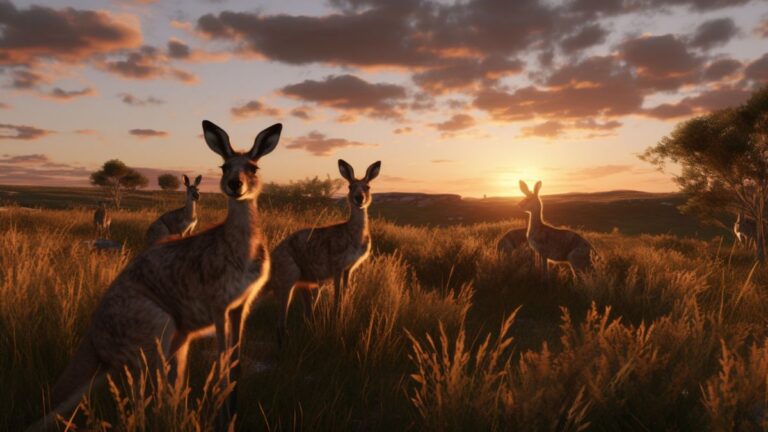50 Facts About China You Need to Know Before Traveling There

As participants in Amazon Associates and other programs, we earn from qualifying purchases. This comes at no additional cost to you. For more details, see our Affiliate Disclosure.
China, a country where ancient traditions seamlessly blend with futuristic innovation, offers a travel experience unlike any other. From the mist-shrouded peaks of the Huangshan mountains to the bustling streets of Shanghai, each corner of this vast land tells a story of civilization, revolution, and rebirth. Before you embark on your journey to the Middle Kingdom, it’s essential to arm yourself with knowledge that goes beyond the usual tourist guides. Here are 50 facts about China that not only illuminate its rich history and cultural nuances but also prepare you for the practical aspects of navigating this complex and fascinating country. Whether you’re a first-time visitor or a seasoned traveler, these insights will enrich your understanding and enhance your experience in China.
1. The Great Wall of China is Longer Than Once Thought
Recent archaeological surveys have revealed that the Great Wall of China, one of the world’s most iconic landmarks, stretches over 21,000 kilometers (about 13,000 miles), significantly longer than previous estimates. This marvel of engineering, built over several dynasties to protect Chinese states against invasions, meanders through deserts, mountains, and plateaus, standing as a testament to China’s historical determination and architectural ingenuity.
2. China is Home to the World’s Largest Population
China holds the title for the world’s largest population, with over 1.4 billion people. This staggering number represents nearly one-fifth of the planet’s total population, showcasing a diverse and complex society that ranges from bustling megacities to remote rural villages. The population’s sheer size and density have profound implications for China’s culture, economy, and environmental policies.
3. Mandarin Chinese is the Most Spoken Language Worldwide
Mandarin Chinese is not only the official language of China but also the most spoken language in the world, with over a billion native speakers. Its status as a critical language on the global stage reflects China’s growing economic and cultural influence. Learning Mandarin offers an invaluable key to understanding Chinese culture and engaging with its people directly.
4. China’s History Spans Over 5,000 Years
China’s history, extending over 5,000 years, is rich with the development of one of the world’s earliest civilizations along the fertile banks of the Yellow River. This long history is marked by the rise and fall of dynasties, significant advancements in science and technology, and profound philosophical contributions, all of which have shaped modern China and the world.
5. The Forbidden City is the World’s Largest Imperial Palace
The Forbidden City in Beijing, with over 980 buildings and spanning 180 acres, is the world’s largest imperial palace. Built in the 15th century during the Ming Dynasty, it served as the home of emperors and their households, as well as the ceremonial and political center of Chinese government for nearly 500 years. Today, it stands as a symbol of China’s grand imperial past and is one of its most visited historical sites.
6. China is a Global Leader in High-Speed Train Technology
China has rapidly advanced to become a global leader in high-speed train technology, boasting the world’s longest network of high-speed railways. The extensive network connects major cities across the country, reducing travel time and boosting economic connectivity. This achievement reflects China’s commitment to innovation and sustainable transportation.
7. The Country Has Over 55 UNESCO World Heritage Sites
With more than 55 UNESCO World Heritage Sites, China is a treasure trove of cultural, historical, and natural wonders. These sites range from the ancient ruins of the Silk Road and the imperial palaces of Beijing to the stunning natural beauty of the South China Karst and the iconic Great Wall. Each site offers a unique glimpse into China’s rich tapestry of history and its diverse natural landscapes.
8. Chinese Cuisine Varies Widely Across Different Regions
Chinese cuisine is renowned for its extraordinary variety and regional distinctiveness. From the spicy dishes of Sichuan and Hunan to the seafood specialties of coastal regions and the hearty, wheat-based foods of the north, China’s culinary landscape is as vast and diverse as the country itself. This diversity not only reflects the rich cultural heritage of China but also the varied climates and resources available across its vast territory.
9. China is the World’s Largest Exporter and Importer
China’s economy has experienced remarkable growth over the past few decades, making it the world’s largest exporter and importer of goods. This economic powerhouse has become central to global trade networks, supplying a vast array of products to international markets while also consuming a significant portion of the world’s raw materials and finished goods. China’s trade policies and economic strategies are closely watched by nations worldwide for their global economic implications.
10. The Chinese New Year Celebration Can Last Up to 15 Days
The Chinese New Year, or Spring Festival, is the most important traditional festival in China, celebrated with 15 days of various customs, family gatherings, and public festivities. It marks the beginning of the lunar new year and is rich in traditions aimed at ushering in luck, health, and prosperity. The celebration includes everything from fireworks and dragon dances to the giving of red envelopes (hongbao) filled with money, symbolizing good wishes for the new year.
11. Tea Was First Cultivated in China
Tea, one of the world’s oldest and most beloved beverages, was first cultivated in China as far back as the Shang dynasty. The discovery and development of tea are deeply ingrained in Chinese culture, with its preparation and consumption evolving into a refined art form. China remains a leading producer of tea, offering a vast array of types, each with its unique flavor profile, from the robust black teas of Yunnan to the delicate green teas of Hangzhou.
12. The Yangtze River is the Third Longest in the World
The Yangtze River, stretching over 6,300 kilometers (about 3,917 miles), is not only China’s longest river but also the third longest in the world. It is a vital artery that flows from the Tibetan Plateau to the East China Sea, shaping the economic, cultural, and ecological landscape of the regions it traverses. The river is home to diverse ecosystems and has been central to Chinese agriculture, transportation, and history for thousands of years.
13. China Has One of the World’s Oldest Writing Systems
China’s writing system, with origins tracing back over 3,000 years, is one of the oldest continuously used in the world. This complex system of characters has evolved from ancient pictographs and ideograms, becoming an integral part of Chinese culture and language. The writing system’s beauty and depth are evident in classical literature, poetry, and modern-day communication.
14. The Panda is Native to South Central China
The giant panda, with its distinctive black and white fur, is native to the bamboo forests of south-central China. This beloved creature has become an international symbol of wildlife conservation and one of China’s national treasures. Efforts by China to protect and preserve the panda’s natural habitat have led to a significant increase in their population, showcasing a commitment to environmental conservation.
15. Traditional Chinese Medicine Has Ancient Roots
Traditional Chinese Medicine (TCM) is a holistic approach to health and healing that has been developed over thousands of years. Based on the principles of balance, harmony, and energy flow, TCM utilizes a variety of practices, including herbal medicine, acupuncture, and qigong, to prevent and treat illness. Its philosophy and methods provide an alternative or complement to Western medical practices for many around the world.
16. China’s Economy is the Second Largest in the World
China’s economy, characterized by rapid industrialization, technological advancement, and urbanization, is the second-largest globally by nominal GDP. Its transition from a primarily agrarian society to an industrial powerhouse within just a few decades is unparalleled. This economic transformation has lifted millions out of poverty and has significantly influenced global economic dynamics.
17. The Silk Road Originated from China
The Silk Road was an ancient network of trade routes that connected China with the Mediterranean, facilitating not only the exchange of goods like silk, spices, and tea but also the flow of ideas, culture, and technology. Originating from China’s Han dynasty, it played a crucial role in the development of the civilizations it connected, enabling a level of global interaction that was unprecedented for its time.
18. Kung Fu (Wushu) is a Historic Chinese Martial Art
Kung Fu, also known as Wushu, is a term used to describe the array of martial arts originating from China, each with its unique philosophy, technique, and purpose. These practices have evolved over centuries, deeply influenced by Chinese philosophical, spiritual, and cultural traditions. Kung Fu is celebrated not only as a form of self-defense but also as a way to cultivate discipline, health, and a harmonious spirit.
19. The Terracotta Army Was Discovered in 1974
The Terracotta Army, discovered in 1974 near Xi’an, is a collection of thousands of life-sized clay soldiers, horses, and chariots that were buried with Qin Shi Huang, the first Emperor of China, to accompany him in the afterlife. This remarkable find, dating back to the 3rd century BCE, provides invaluable insight into the history, military practices, and art of ancient China.
20. China Has a Single Time Zone Across the Entire Country
Despite its vast geographical expanse, China operates on a single time zone, Beijing Standard Time (GMT+8). This policy, implemented nationwide, means that the entire country follows the same clock, regardless of the natural light patterns in different regions. This unique approach to timekeeping reflects China’s centralized governance and has various social and economic implications across its territories.
21. The Chinese Invented Paper, the Compass, Gunpowder, and Printing
China’s contributions to the world include some of the most significant inventions in human history: paper, the compass, gunpowder, and printing. These innovations not only revolutionized Chinese society but also had a profound impact on the development of civilizations worldwide. The invention of paper facilitated the spread of knowledge, the compass transformed navigation and exploration, gunpowder changed warfare, and printing made it possible to mass-produce texts, greatly contributing to the dissemination of literature and information.
22. Shanghai Has the World’s Second Tallest Building
Shanghai, a global financial hub, is home to the Shanghai Tower, which stands as the world’s second tallest building. With its spiraling design, this architectural marvel reaches an impressive height, offering panoramic views of the city from its observation decks. The Shanghai Tower is a symbol of China’s rapid urban development and its ambitions in modern architecture and sustainability.
23. Chinese Festivals Are Rich in Tradition and History
Chinese festivals, rooted in the country’s rich tradition and history, play a crucial role in its cultural identity. These festivals, including the Spring Festival (Chinese New Year), the Mid-Autumn Festival, and the Dragon Boat Festival, among others, are celebrated with a variety of customs that have been passed down through generations. They are times of joy, reflection, and community, highlighting the importance of family, tradition, and the cycles of the moon and harvest.
24. The Chinese Zodiac Includes 12 Animals
The Chinese zodiac, an essential part of Chinese culture, is a repeating cycle of 12 years, with each year being represented by an animal and its reputed attributes. These zodiac animals influence people’s personalities, career, compatibility, and fortune according to Chinese astrology. The zodiac plays a significant role in Chinese New Year celebrations and is deeply woven into Chinese mythology and folklore.
25. Alibaba is the World’s Largest Retail Platform
Alibaba, founded in China, has grown to become the world’s largest retail platform, surpassing global giants in terms of gross merchandise volume. It has transformed the landscape of e-commerce and digital payments in China and beyond, offering everything from consumer retail and wholesale goods to cloud computing services. Alibaba’s success story is emblematic of China’s rapid ascent in the global digital economy and its capacity for innovation and entrepreneurship.
26. The Hukou System Controls Population Distribution
The Hukou system in China is a household registration policy that plays a significant role in controlling population distribution and access to public services. This system categorizes citizens based on their residential area, affecting their eligibility for healthcare, education, and employment opportunities based on their Hukou status. While it has been instrumental in managing urbanization, it also poses challenges for social mobility and equity.
27. Social Media in China is Unique and Diverse
China’s social media landscape is unique and diverse, characterized by platforms like WeChat, Sina Weibo, and Douyin (TikTok’s counterpart in China). These platforms offer a variety of services, from messaging and blogging to shopping and payments, catering to the multifaceted needs of the Chinese digital community. The growth of social media in China reflects the country’s digital innovation and the social dynamics of its netizens.
28. China Has More Than 160 Cities with Over 1 Million Residents
China’s urban landscape is staggering, with more than 160 cities boasting populations of over 1 million residents. This urbanization reflects China’s rapid economic development and the migration of people from rural areas seeking opportunities in urban centers. The scale and speed of China’s urban growth are unparalleled, presenting both opportunities and challenges in terms of infrastructure, environmental sustainability, and social services.
29. The Chinese Education System is Highly Competitive
The Chinese education system is known for its rigor and highly competitive nature, particularly regarding the Gaokao, China’s national university entrance examination. This exam is a crucial determinant of a student’s future education and career path, reflecting the emphasis placed on academic achievement in Chinese society. The system’s competitiveness drives a high level of educational attainment, but it also places significant pressure on students and families.
30. Chinese Calligraphy is an Honored Art Form
Chinese calligraphy, the art of writing Chinese characters with brush and ink, is a revered cultural practice with thousands of years of history. Beyond its aesthetic beauty, calligraphy is considered a reflection of the writer’s personality, emotions, and artistic skills. This art form is deeply embedded in Chinese culture, representing a harmonious blend of literature, philosophy, and visual art.
31. The Gobi Desert is One of the World’s Largest Deserts
The Gobi Desert, stretching across northern China and southern Mongolia, stands as one of the world’s largest deserts. Known for its harsh climate and diverse geography, which includes mountains, sand dunes, and grasslands, the Gobi is not just a barren wasteland but a region rich in fossils and history. It was an important part of the Silk Road, providing a backdrop for significant cultural and trade exchanges between the East and the West.
32. The One-Child Policy Was Relaxed in 2015
Implemented in 1979 to control population growth, China’s one-child policy was a radical measure that shaped Chinese society for decades. However, recognizing the long-term demographic challenges such as an aging population and a shrinking workforce, the policy was relaxed in 2015 to allow families to have two children. This significant policy shift reflects China’s efforts to balance social development and demographic needs.
33. China is a Leading Player in Renewable Energy
China is at the forefront of the global shift towards renewable energy, leading the world in the production and consumption of wind turbines, solar panels, and electric vehicles. This commitment to renewable energy sources is part of China’s broader strategy to reduce pollution and combat climate change. As the world’s largest emitter of greenhouse gases, China’s efforts in renewable energy development are critical to global environmental sustainability.
34. The Country Has a Rich Tradition of Literature and Poetry
China’s literary heritage, stretching back thousands of years, includes some of the most profound and influential works in world literature. Ancient texts like “The Art of War” by Sun Tzu and poetic masterpieces from the Tang and Song dynasties have transcended cultural boundaries, offering timeless insights into human nature, philosophy, and the beauty of the natural world. This rich tradition continues to inspire and influence writers and readers globally.
35. The Chinese Calendar is Lunisolar
The Chinese calendar is lunisolar, meaning it is based on both the moon phase and the solar year. This calendar determines the dates of traditional festivals, including the Chinese New Year and the Mid-Autumn Festival. It incorporates elements of Chinese astrology, such as the zodiac animals, and has been used for millennia to mark agricultural cycles and other significant events in Chinese culture.
36. Mahjong is a Popular Chinese Game
Mahjong, a tile-based game developed in China in the 19th century, has become a popular pastime worldwide. Traditionally played by four people, the game requires skill, strategy, and a bit of luck. Mahjong is deeply embedded in Chinese cultural and social life, often played during gatherings and festivals, and is celebrated for its ability to bring people together.
37. Confucianism, Taoism, and Buddhism are Major Philosophies
Confucianism, Taoism, and Buddhism have profoundly shaped Chinese thought, culture, and society over centuries. Confucianism emphasizes morality, social harmony, and respect for hierarchy. Taoism advocates for living in harmony with the Tao, or the natural order of the universe. Buddhism, which arrived in China from India, introduces concepts of karma, rebirth, and enlightenment. These philosophies offer diverse perspectives on life, ethics, and the universe, contributing to the rich tapestry of Chinese spirituality.
38. The Mid-Autumn Festival Celebrates the Moon
The Mid-Autumn Festival, one of China’s most important traditional festivals, celebrates the moon at its fullest and brightest. This festival, occurring in the eighth lunar month, is a time for family reunions, moon gazing, and enjoying mooncakes, a special pastry filled with sweet bean paste or lotus seed paste. The festival is imbued with legends, such as that of Chang’e, the moon goddess, highlighting its cultural and mythological significance.
39. China’s National Sport is Table Tennis
Table tennis, often referred to as ping pong, is considered China’s national sport, with the country dominating the sport on the international stage for decades. Introduced in the early 20th century, table tennis has become a source of national pride, reflecting China’s focus on excellence, precision, and discipline. The sport enjoys widespread popularity, played by people of all ages across the country.
40. The Yellow Mountains Are Famous for Their Beauty
The Yellow Mountains (Huangshan) in eastern China are renowned for their breathtaking beauty, with peculiarly shaped granite peaks, pine trees jutting out from rocky crevices, and a sea of clouds that envelops the mountains. This natural wonder has been a source of inspiration for Chinese painters and poets for centuries, embodying the quintessential landscape revered in traditional Chinese art and culture.
41. China Is Developing Its Own GPS System
China is developing its own global positioning system (GPS), known as BeiDou. This initiative aims to reduce China’s dependence on the American GPS system, offering enhanced location services, navigation, and timing services across the globe. BeiDou is part of China’s broader strategy to advance its technological independence and expand its influence in global telecommunications and satellite navigation.
42. WeChat is Essential for Daily Life in China
WeChat, developed by Tencent, is more than just a messaging app; it’s an indispensable part of daily life in China. Integrating social media, instant messaging, e-commerce, and payment services, WeChat has transformed the way people communicate, shop, and manage their finances. Its ubiquitous presence underscores China’s digital innovation and the central role of mobile technology in Chinese society.
43. Dragon Boat Racing is a Traditional Chinese Sport
Dragon boat racing, with origins dating back over 2,000 years, is a traditional Chinese sport that commemorates the patriotic poet Qu Yuan. This event features teams paddling in unison in long, narrow boats adorned with dragon heads and tails, especially during the Dragon Boat Festival. The festival and its races are a vibrant expression of Chinese culture, emphasizing teamwork, endurance, and community spirit.
44. The Qixi Festival is Known as Chinese Valentine’s Day
The Qixi Festival, celebrated on the seventh day of the seventh lunar month, is often referred to as Chinese Valentine’s Day. Based on a romantic legend about a weaver girl and a cowherd who are allowed to meet just once a year across a magical bridge of magpies, Qixi is a day for celebrating love and romance. Couples partake in festivities, exchange gifts, and enjoy romantic outings, keeping the ancient story alive in modern times.
45. China is Making Significant Advances in Space Exploration
China’s space exploration efforts have achieved remarkable milestones, including moon landings, the launch of the Tiangong space station, and plans for manned missions to Mars. These achievements highlight China’s commitment to becoming a leading power in space science and technology. Through these ambitious projects, China aims to explore the final frontier, contributing to humanity’s understanding of the universe.
46. The Sichuan Province is Known for Its Spicy Cuisine
Sichuan cuisine, originating from the Sichuan Province in southwestern China, is famous for its bold flavors, particularly the use of garlic, chili peppers, and the unique Sichuan peppercorn that imparts a tingling numbness. Dishes such as mapo tofu and kung pao chicken exemplify the spicy, pungent, and savory characteristics of Sichuan cooking, making it a favorite among those who crave intensity in their food.
47. Chinese Architecture Features Distinctive Roof Designs
Chinese architecture is renowned for its distinctive roof designs, characterized by upturned eaves, intricate wooden brackets, and colorful decorative patterns. This style, evident in ancient palaces, temples, and traditional residences, reflects the philosophical and aesthetic values of harmony and balance. The architectural principles emphasize integration with nature, showcasing the skillful craftsmanship and cultural depth of Chinese architectural traditions.
48. Red Symbolizes Good Fortune and Joy
In Chinese culture, red is considered the color of good fortune, joy, and prosperity. It is prominently featured in festivals, weddings, and other celebratory events, symbolizing happiness and good luck. The significance of red is deeply rooted in Chinese mythology and history, making it an auspicious color for gifts, decorations, and attire during important occasions.
49. China Has the World’s Largest Standing Army
China boasts the world’s largest standing army, a key component of the People’s Liberation Army (PLA). This formidable force is central to China’s national defense strategy and its growing influence as a global military power. The PLA’s capabilities, including advanced weaponry, cyberwarfare, and space warfare units, reflect China’s strategic priorities and its emphasis on securing its interests and asserting its position on the international stage.
50. The Country is Committed to Becoming a “Cyber Superpower”
China’s ambition to become a “cyber superpower” is evident in its extensive investments in digital infrastructure, cybersecurity, and technology innovation. Through initiatives like the “Great Firewall,” China aims to control the digital flow of information while fostering the growth of its tech industry. This commitment to digital advancement and control is a key facet of China’s strategy to shape the future of global technology and internet governance.






